Dee Estuary Birding
Monthly Newsletter...
August 2021 Newsletter
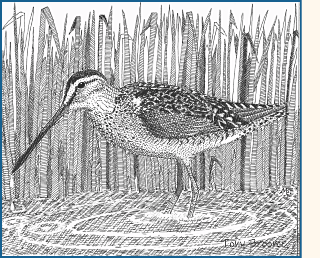
Liverpool Bay Knots
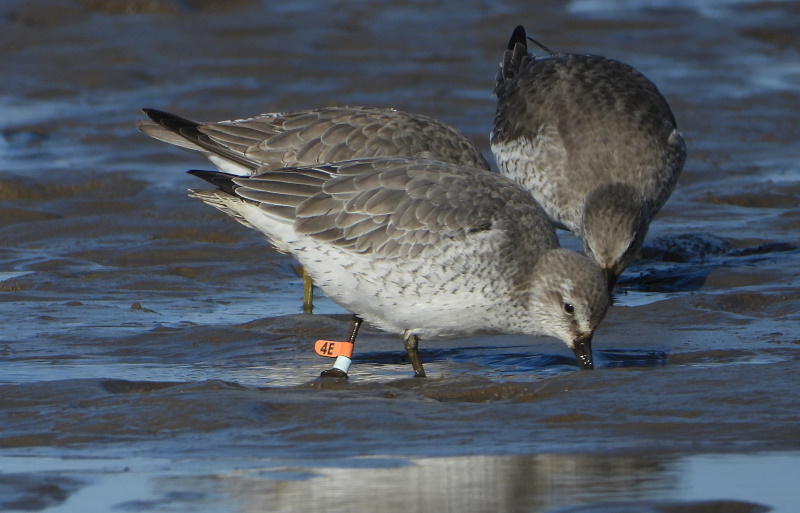
Photographed off West Kirby in February 2021 © Richard Smith
Cold, sunny and no wind - ideal weather to go
looking for Knots. I got to Caldy steps and was pleased to see a flock
of around 3,000 on the edge of the channel, about 300 yards away. But
now I got nervous, feeding Knot are always moving about and it was
quite likely these would disappear on to the vast sand banks of the
nearby Dawpool Bank in the middle of the estuary before I got the
chance to read any flags. Indeed, I'd only got a third of the way there
when a Peregrine flew over, they all flew up and I thought that would
be it for the day. But instead of disappearing they first circled
(perhaps checking the Peregrine had gone) and then landed on the mud a
short distance away before walking towards and around me busily
feeding,
seemingly oblivious to my presence - fantastic!
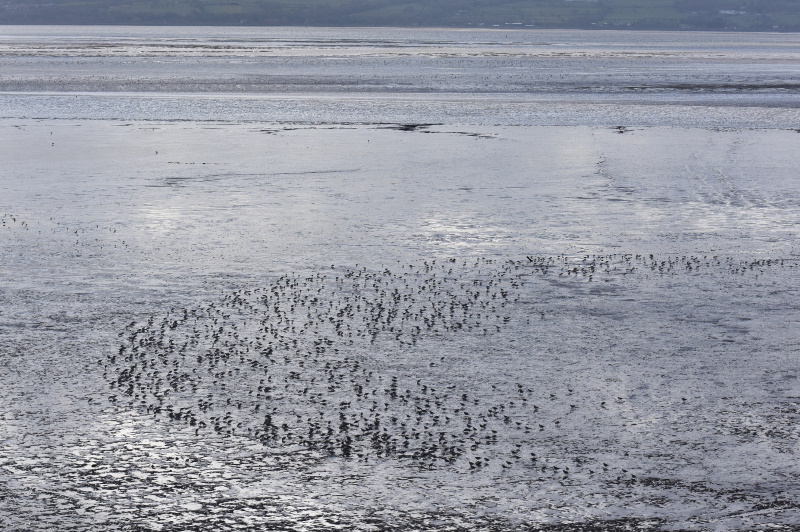
© David Parker
I read 48 different flags that morning in early February, my best ever total, and it was one of many wonderful days I had among the Knots last winter. Living next to the Dee Estuary meant I was lucky enough to be able to go onto the mudflats despite the lockdowns, strictly speaking I'm not sure if standing looking at Knots for a couple of hours could be described as exercise, but one thing is for certain I was a lot safer from Covid out there than walking on the nearby crowded beach.
I'm one of a small group of people intensively studying the Knots which use Liverpool Bay. To help with this a total of 1,320 have been fitted with individually inscribed Orange flags (henceforth known as Oflags) and, since the first were flagged in September 2017, there have been a remarkable 9,000 records - 36% from the Dee Estuary and North Wirral, 56% from the Sefton Coast (including RSPB Marshside, Ainsdale, Formby, Crosby and Seaforth) with the remaining 12% being mainly from Morecambe Bay, Ireland, Iceland and Netherlands. Another amazing statistic is that 1,063 out of the 1,320 Knots fitted with Oflags have been re-sighted, a recovery rate of 80.5% which must be one of the highest recovery rates in the world for colour ringed waders.
Although just four of us have the majority of records that doesn't mean others haven't contributed and I reckon the total count of observers is at least 160. That's the beauty of a colour-ringed project - anybody can participate, citizen science in action. Between all of us we are beginning to build up a detailed picture of how the Knot use the area, how some disperse to other sites and how different populations come and go. Some of this is discussed in the fascinating article by Rose Maciewicz and Peter Knight published in my November 2019 Newsletter - see The Altcar Red Knot Colour Ringing Project.
But Oflags aren't the only colour-ringed Knots we
see here, and we have recorded birds ringed in Canada, Norway,
Netherlands, Iceland, France and Poland as well as various locations
around the British Isles. To see details of all these different colour
ringing projects and contact details you can download a 'Photographic Guide to Colour-ringed Red Knot'
(PDF file) by Rose Maciewcz and Peter Knight. Below is a graph showing
the numbers of individual birds spotted on the Dee Estuary from each
scheme over the past four winters.
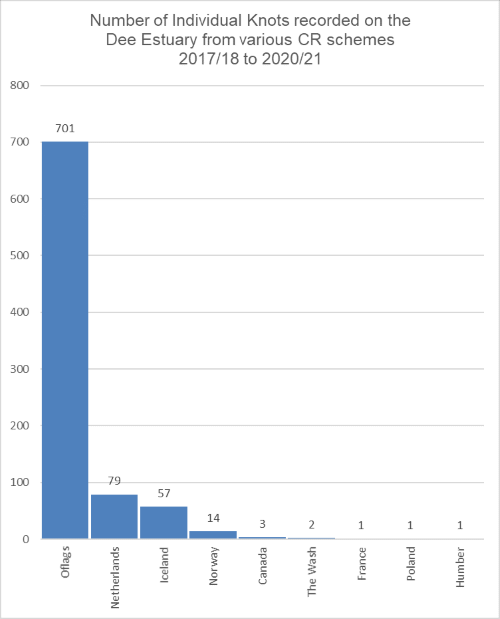
1. The Oflags (Orange flagged Knots) we've recorded were mostly ringed on the Sefton Coast (Ainsdale and Altcar) except for five ringed in Cardigan Bay, five ringed at Bangor (North Wales) and one in NE Scotland.
2. Thousands of Knot have been ringed on the Waddensea in the Netherlands (see Ref 5), these birds moult there after breeding in late summer and early autumn, many then fly west and spend the winter in the Liverpool Bay area between late October and early March.
3. All the Icelandic ringed birds were ringed in May during their northwards passage, they stage in Iceland for a few weeks before flying on to Canada. Colour ringing has shown most of the Liverpool Bay population use south-west Iceland to feed up.
4. Another staging area is the northern tip of Norway and this is mostly used by the Waddensea birds.
5. Many colour-ringed Knots have been seen several times hence the numbers of records is a lot higher than individual birds.
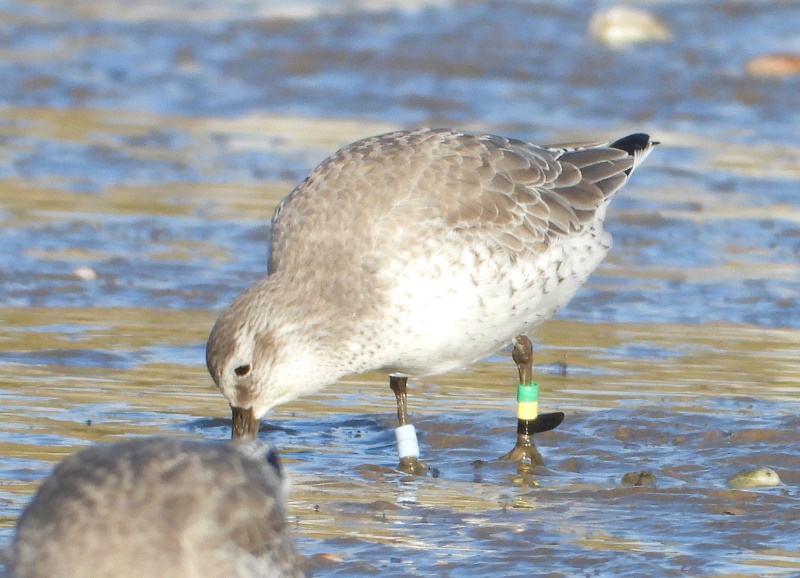
Photographed at Thurstaston in November 2020 © Richard Smith
Our observations of Oflags show that the Liverpool Bay Knots are very
site faithful, but that doesn't mean that they aren't seen
elsewhere. Some are recorded on migration, some may use different
moulting areas and others just disperse around the coast through the
winter. See the two maps below which show all the locations Oflags have
been recorded:
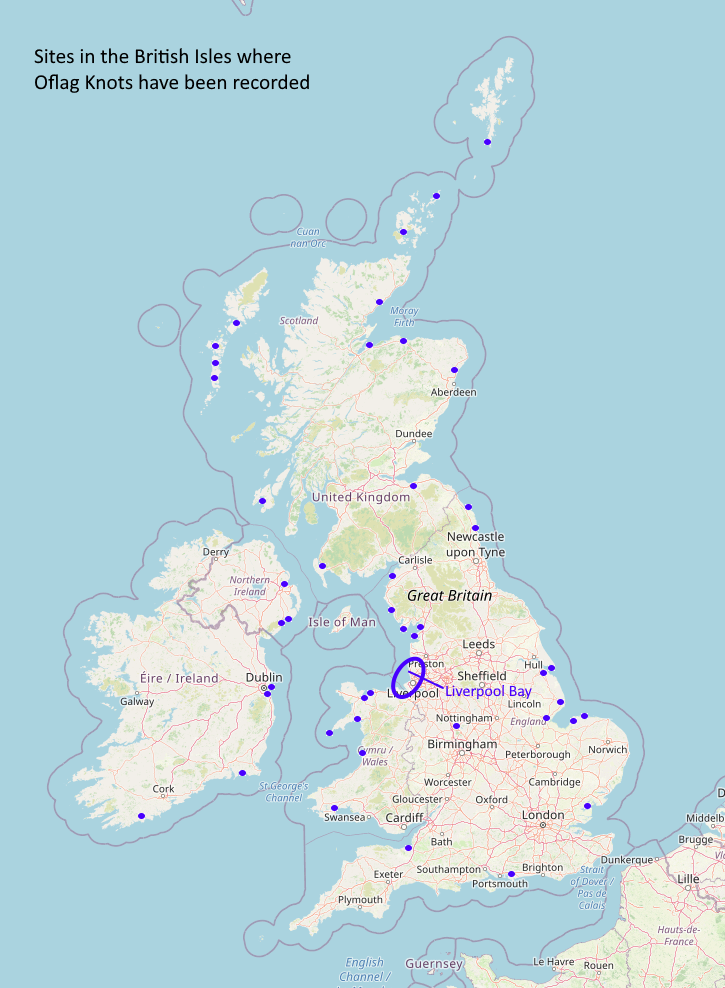
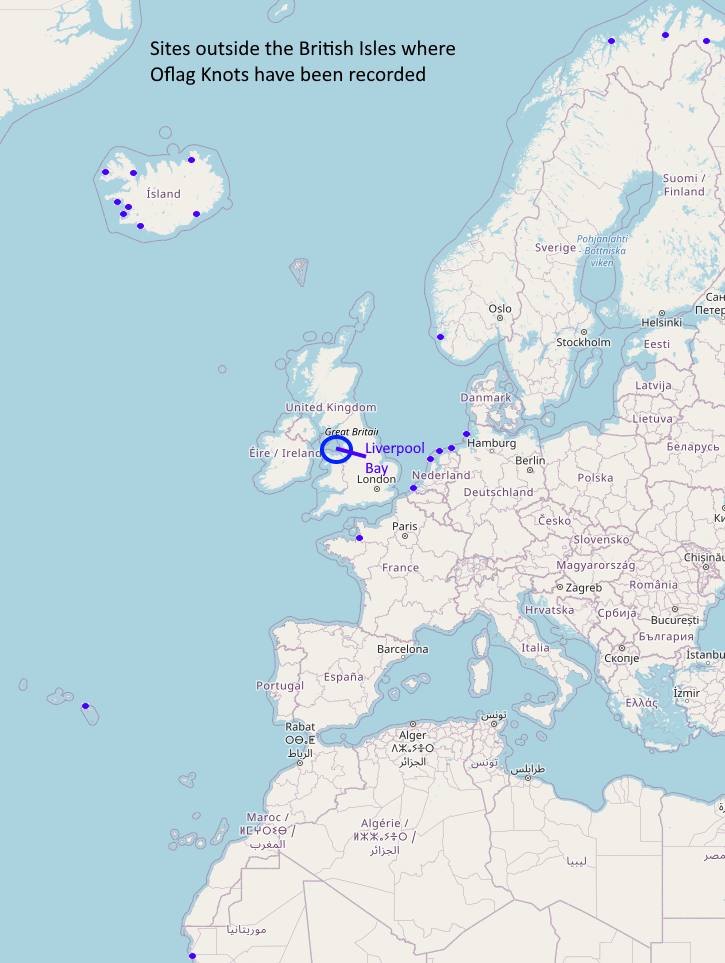
© OpenStreetMap contributors https://www.openstreetmap.org/copyright
All the Iceland records were of birds staging there during migration, birds are seen mainly in May with just 10% recorded in July after breeding, most Knot don't stage in Iceland on the return journey. The Norwegian records were in May although numbers of Oflags seen there are very low. All the records from the Outer Hebrides and the northern islands were in late April and May, again with birds on northward migration.
Records from the Wash and the Waddensea (northern Netherlands and NE Germany) are all during the post-breeding moult from late July through to September. Most Liverpool Bay birds moult along the Sefton coast and the Ribble Estuary but a few must join the larger North Sea population.
In winter a proportion of the Liverpool Bay
population disperse to the east side of Ireland, mainly to Dundalk Bay
and Dublin Bay. Similarly some fly to Morecambe Bay with the odd one or
two recorded elsewhere, including north-west France. Interestingly the
Oflag readings tell us that most of these dispersed birds return to the
Sefton coast in late April before they all fly off to Iceland.
Undoubtedly the two most unexpected records are the
ones in the Azores and in Mauritania (the two blue dots bottom left
above). As you can imagine Knots in the Azores are very rare and are
usually thought to be be birds of the rufa
sub-species from America which have been blown across the Atlantic.
Perhaps the Oflag which ended up in the Azores started to fly south
with the rufa flocks before
heading eastwards much further south than normal. Remarkably this bird
found it's way back to Liverpool Bay. The bird in Mauritania was found
with the over wintering Knot there which are of the canutus sub-species, these pass
through the Waddensea before heading north-east to Siberia to breed
before returning by the same route. All the birds in Liverpool Bay are
of the islandica sub-species
and aren't supposed to fly as far south as Mauritania - so it's
interesting that there is obviously some mixing of the different
populations.
References/Further Reading
1. Richard Smith, Knots on the Dee Estuary 2012/13, http://www.deeestuary.co.uk/news1013.htm.
2. Richard Smith, Among Knots (Feb 2018), http://www.deeestuary.co.uk/news0218.htm.
3. Rose Maciewicz and Peter Knight, November 2019 Newsletter - The Altcar Red Knot Colour Ringing Project.
4. Rose Maciewicz and Peter Knight, Photographic Guide to Colour-ringed Red Knot, Jan 2021.
5. Research on Red Knots, Royal Netherlands Institute for Sea Research (NIOZ) - Click here for Website.
Richard Smith
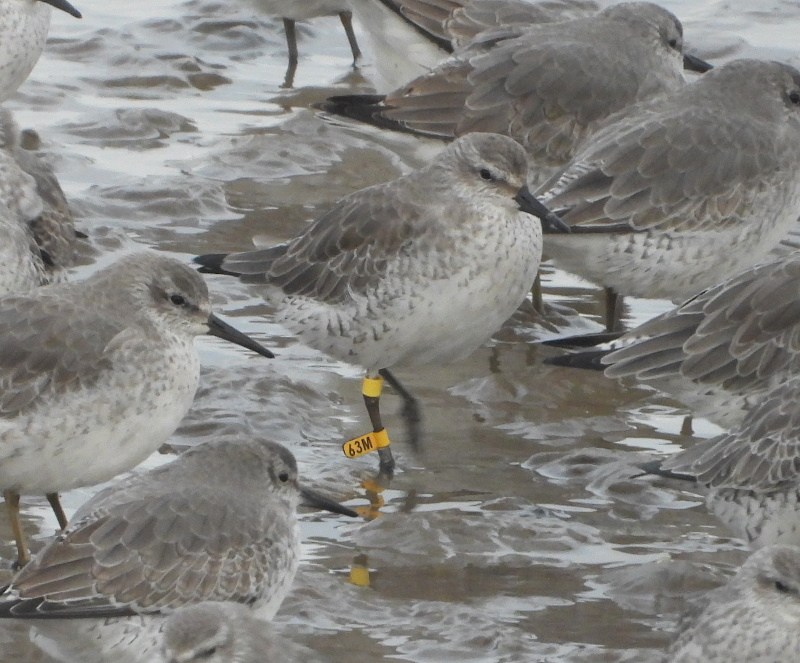
Colour Ring Report
Sandwich Terns

Sandwich Tern photos all taken at West Kirby July 2021 © Richard Smith
Yellow C39 (top
photo above)
Ringed as a chick at Hodbarrow, Cumbria, on 21/06/2021.
Recorded at West Kirby on 07/07/2021.
This was the first ringed juvenile from Hodbarrow to be recorded away
from the colony this year.
White KHV
(second from top photo above)
Ringed as a chick at the Lady's Island Lake Nature Reserve at Wexford,
Ireland, on 17/06/2015.
Recorded at:
County Cork in August 2015.
Formby Beach early August 2019 before moving west to Rhyl later in the
month.
It was back at Wexford in April 2020 and in July 2020 was at Dublin.
West Kirby on 07/07/2021.
Yellow K2D
(third photo above)
Ringed as a chick at the Lady's Island Lake Nature Reserve at Wexford,
Ireland, on 27/06/2018.
Recorded at:
Duncannon Beach, Wexford, in September 2018.
River Clwyd at Rhyl in August 2020.
West Kirby on 08/07/2021.
Red KCA (bottom
photo)
Ringed as a juvenile on passage at Ynyslas (Cardigan Bay) on 03/09/2015.
After presumably spending a couple of years in the tropics this bird
was resighted at Knott End, Lancashire, in September 2017. It was first
recorded breeding, at Hodbarrow, Cumbria, in 2018.
A typical post breeding record was at Rhyl in July 2019 but the
following year it was spotted at Port Seton (just east of Edinburgh) in
August. Seems incredible that the post breeding dispersal can include
traveling the 'wrong way', i.e. north-east across the country to the
North Sea, but we know from previous colour ring recoveries that some
do just that.
In 2021 it was again breeding at Hodbarrow before being seen at West
Kirby on 07/07/2021.
Mediterranean Gulls
Lots of Mediterranean Gulls were spotted in July and
we managed to record three ringed ones at Thurstaston.
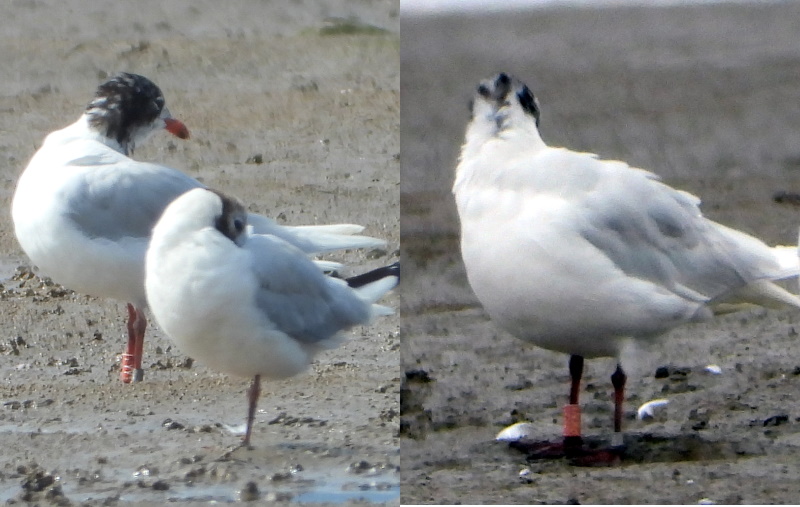
Polish ringed Mediterranean Gulls at Thurstaston, July 2021, © Richard
Smith.
Red PYY1
(left photo)
Ringed as a breeding female in north-east Poland on 18/05/2017.
Recorded back at the ringing site in May 2018.
Recorded on Thurstaston Shore in August 2018, July 2019, August 2020
and 25/07/2021.
Red PKN1 (right
photo) - note ring is very faded.
Ringed as a chick in south-west Poland (near Katowice) on 28/05/2018.
Recorded:
Belfast in August 2018.
Camel estuary, Cornwall, in June 2019.
Thurstaston Shore on 24 and 26/07/2021.
Note the long journey west in 2018 when it was a juvenile. No breeding
or winter records but the faded ring won't help.
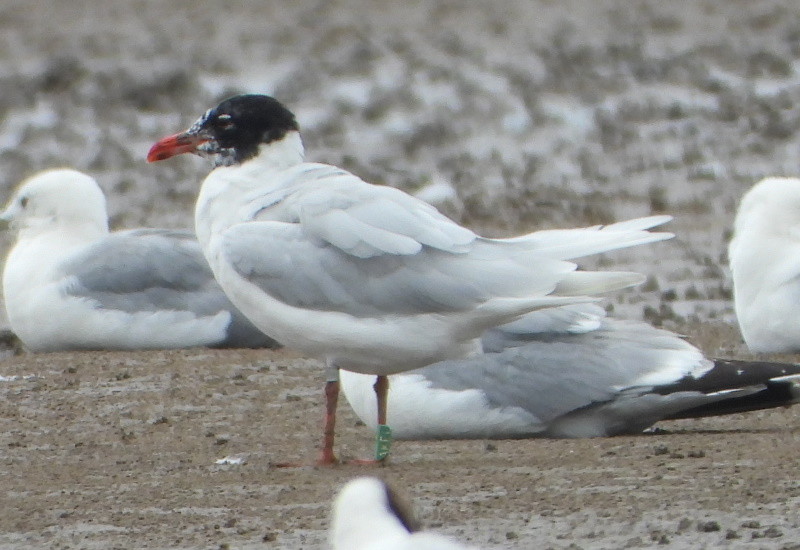
Green AKEL
(photo above at Thurstaston, © Richard Smith)
Ringed as a breeding male on the Elbe Estuary, Germany, on 20/05/2012.
Recorded:
Back at the ringing site in May 2015.
Thurstaston Shore in July 2018 and September 2019. Also seen at Hoylake
in September 2019.
In 2021 it was breeding at the ringing site on the Elbe Estuary.
Thurstaston Shore on 24 and 25/07/2021.
Black-tailed Godwits
The Black-tailed Godwits started returning from
Iceland in early July, with many hundreds at both Caldy and Burton by
the month-end.
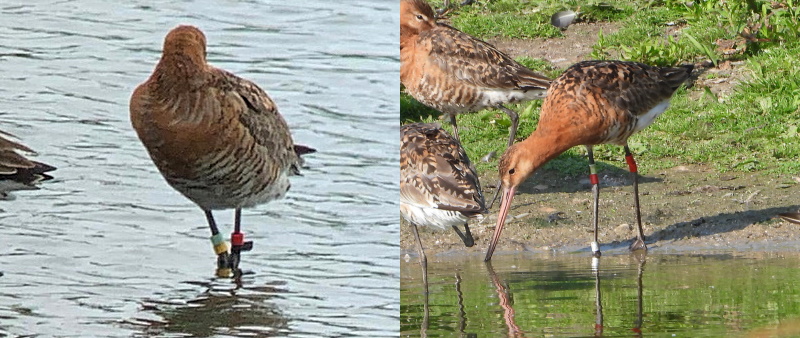
Left: RNflag-LY at Burton Mere Wetlands © Colin
Schofield Right: RR-LR at Caldy Wildfowl Collection ©
Richard Smith
RNflag-LY
Ringed as an adult on Welwick Saltmarsh, Humber, on 10/12/2018.
Recorded:
Snettisham RSPB in July 2020.
Pyewipe, north Lincs, in February 2021.
Amble, Northumbria, in April 2021.
Burton Mere Wetlands on 07/07/2021.
RR-LR
Ringed as a chick in southern Iceland on 23/06/2003.
From 2003 to 2009 all records came from the Atlantic coast of France,
mainly in autumn with just a few winter records.
It was recorded back in Iceland in May 2010 and 2011 with a few records
from France in between.
Late February 2013 saw a rare late winter record in France followed by
a March 2013 sighting in the Netherlands, perhaps indicating this bird
migrates north via the Netherlands as many of these godwits seem to do.
The bird then disappeared until August 2017 when it turned up on the
Swale estuary in Kent. All further records were from the Swale and
always from August to October in 2018, 2019 and 2020.
Recorded at Caldy on 21/07/2021 where it appears to have only stayed
one day before heading south.
Dunlin
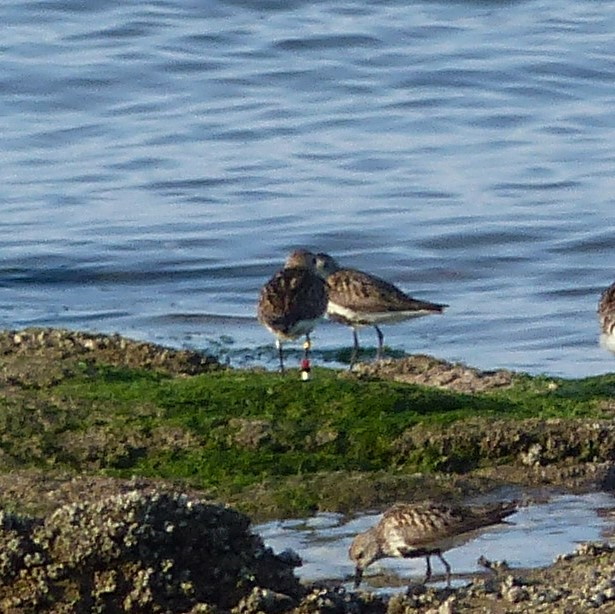
Y/RNW (photo above at Hilbre ©
Andrea Sawiak)
Ringed at Pontevedra (near Vigo) in north-west Spain on 09/09/2019.
Recorded at Hilbre on 21/07/2021.
Colour Rings were recorded by Richard Smith, Colin Schofield, Andrea
Sawiak, Steve Hinde, Alan Hitchmough and Steve Williams.
July Bird News
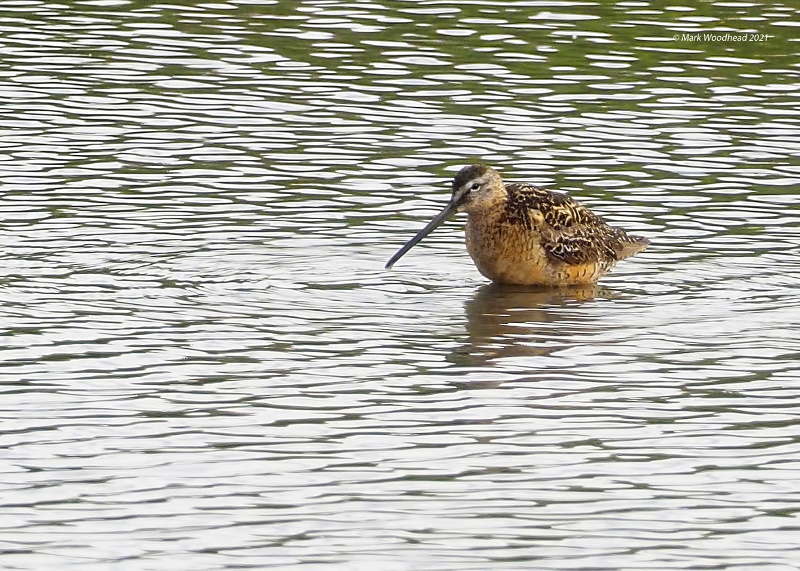
A great month, not least for rarities. Hilbre
had two star birds starting with a Melodious Warbler on the 20th. It
was trapped
and ringed, and then trapped again giving the birders who had traveled
across to the island a chance to see it. We reckon this is the 14th
record for the Dee Estuary area, apart from one record along Lingham
Lane all the others were at either Hilbre or Red Rocks. The next day a
Hoopoe turned up, also on Hilbre, given the good weather the place was
heaving
with day trippers but the bird ended up on the west side of the island
which was comparatively quiet (see Finders Article).
We then had to wait five more days for the next rarity which was a
Long-billed Dowitcher at Burton Mere Wetlands on the 25th which stayed
almost a week (also see Species
Spotlight - Long-billed Dowitcher April 2020).
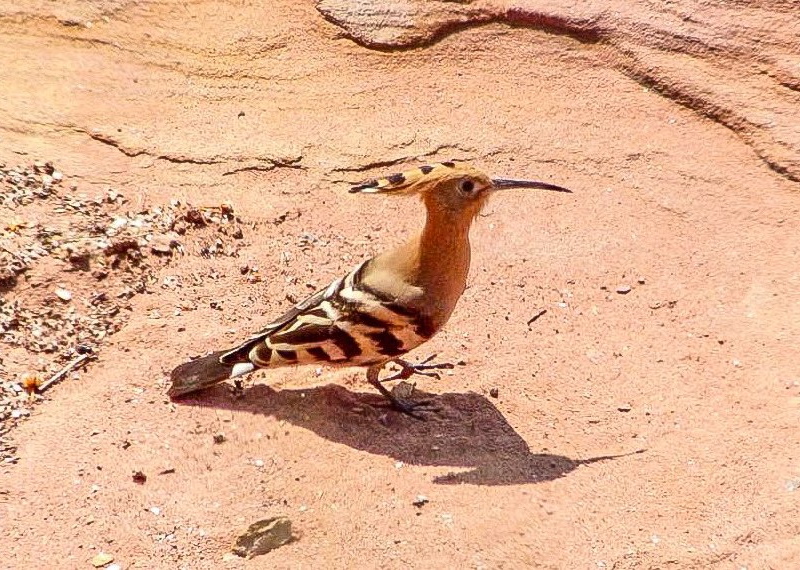
As usual bird numbers built up rapidly through
the month but two species stood out with unusually high numbers -
Common Sandpipers and Mediterranean Gulls. Below are a couple of graphs
comparing this June and July with the previous four years.
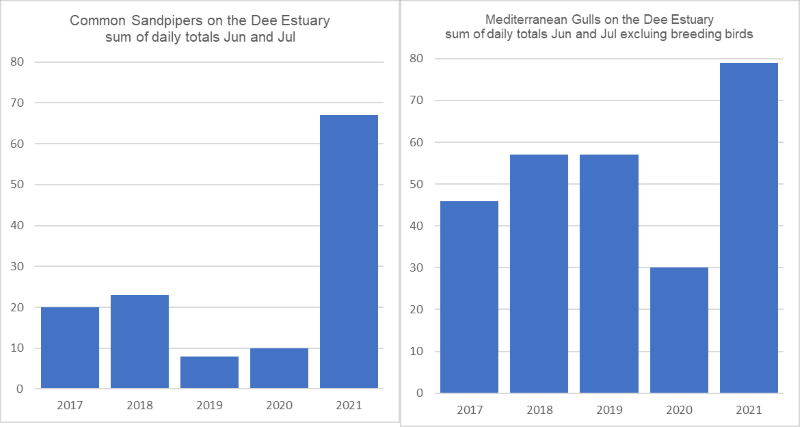
Common Sandpipers are solitary birds on migration
with records normally of one or two birds, so on the 12th when 11 were
seen along the River Dee by Connah's Quay and nine at Burton Mere
Wetlands we knew it was a very good autumn passage. But then on the
10th two local birders took a walk between the main A494 River Dee
bridge at Queensferry and the A548 Flint Bridge past Connah's Quay, and
they just couldn't stop seeing Common Sandpipers. In the end the total
was a remarkable 35, and surely one of the highest counts ever made on
the Dee Estuary. Apart from the three counts mentioned six on the
groyne at Meols on the 19th was another high number.
Less of a surprise is the graph for Mediterranean
Gulls as this species has been increasing for a good number of years.
Numbers peak in July as they disperse post breeding - and colour
ringing shows that many fly in from the continent and as far away as
Poland, and that includes juveniles. As usual Heswall and Thurstaston
had the bulk of records and we know at least 12 different birds were
involved there, with undoubtedly several more scattered around the rest
of the estuary.
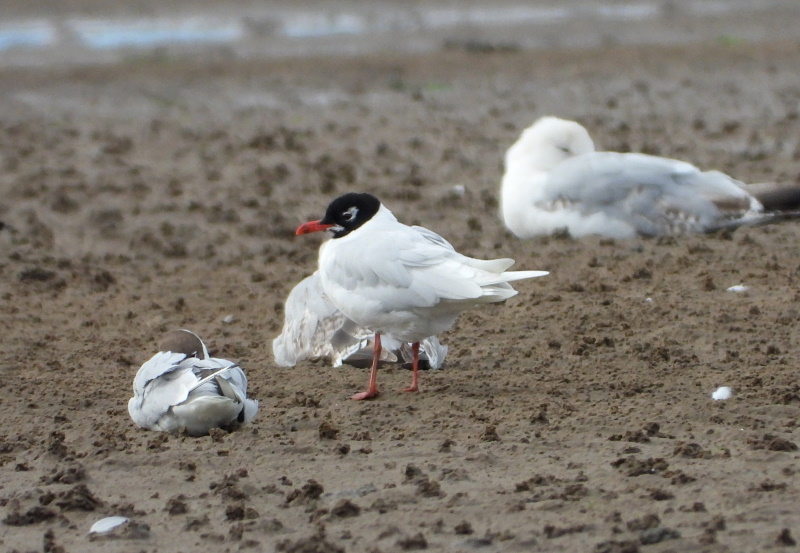

Roseate Terns are rare in the Dee Estuary area
so three at Gronant and one at Hoylake were good records, also at
Hoylake was an adult s/pl Little Gull and a Yellow-legged Gull.
Sandwich Terns had increased to 830 at Hilbre by the end of the month
and seem to have had a good breeding season with around a third of the
flock being juveniles. I understand both the Common Terns at Shotton
and Little Terns at Gronant and Point of Ayr have also done well but we
still await figures for these colonies. Further breeding news comes
from Burton Mere Wetlands (BMW) and Burton Marsh thanks to Graham Jones
of the RSPB. At BMW it was confirmed that a pair of Bitterns have
successfully bred, although the fledged young have yet to be spotted.
At least two pairs of Bearded Tit have bred and a survey revealed a
remarkable 28 Cetti's Warbler territories. Three pairs of Great Egrets
produced 10 young and there were 70 pairs of Little Egrets, but two
pairs of Cattle Egrets were unsuccessful. A pair of Pintail bred, the
nest was in the Flintshire part of the reserve and a first for that
county, other ducks included 36 pairs of Shoveler. 56 pairs of Redshank
and up to 60 pairs of Avocet bred, however many of the 89 pairs of
Lapwing failed during the bad weather in May, although some will
hopefully have re-laid. Six pairs of Mediterranean Gulls were present
on the reserve. A pair of Marsh Harriers nested at BMW with another
three nests on the marshes.

What to expect in August
Numbers of Sandwich Terns will peak early in the month and there should be plenty of Common and Little Terns around as they finish their breeding season. August is also a good month for seeing scarcer terns with Arctic, Black and Roseate all possibilities. Look out for Mediterranean Gulls, north Wirral is a particularly good place to see them and we could get as many as 10 present among the many Black-headed Gulls.
We get plenty of waders in August, most are passing
through and are unlikely to be the same individuals we see in winter.
At least 4,000 Redshanks at Heswall and Thurstaston will probably be
the largest flock in the country this month, as will be the 6,000
Black-tailed Godwits at Caldy. High tides towards the end of the month
should bring hundreds of Dunlin and Ringed Plover to Hoylake shore, and
hopefully a Curlew Sandpiper or two. The few Knot on view are quite
likely to be juveniles, specially if they've had a good breeding
season. Greenshanks will be coming through, look out for them at
Parkgate and the Connah's Quay Reserve.
A strong westerly will be good for sea-watching with
skuas, Manx Shearwaters and Gannets all on view with the possibility of
Storm Petrels. Towards the end of the month one or two Leach's Petrels
could turn up giving us a taster for, hopefully, many more in September.
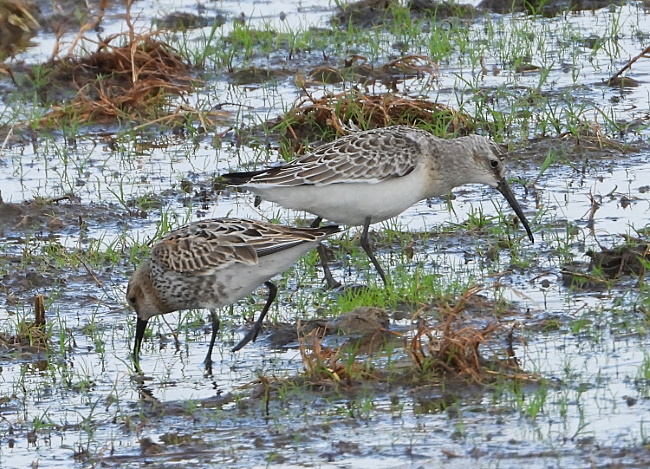
Forthcoming Events
August Highest Spring Tides (Liverpool)
Also see Tides page.
23rd August, 12.42hrs (BST), 9.2m.
24th August, 13.19hrs (BST), 9.2m.